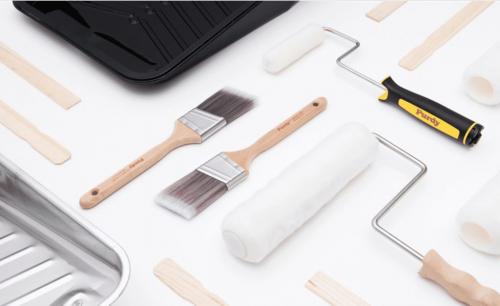Cabinet Hinge Types | What You Should Know
Introduction
Cabinet hinges are essential
components that provide functionality and aesthetics to cabinets. They come in
various types, each offering different features and benefits. Understanding the
different cabinet hinge types is crucial for selecting the right one for your
specific needs. In this guide, we'll explore the most common types of cabinet
hinges, their features, and considerations to help you make an informed
decision.
Butt Hinges:
·
Traditional and versatile hinge type consisting
of two rectangular metal plates joined by a pin.
·
Suitable for both frameless and face-frame
cabinets.
·
Ideal for inset cabinet doors where the door
sits flush with the cabinet frame.
·
Available in various sizes and finishes matching
different cabinet styles.
Concealed Hinges:
·
Also known as European hinges, concealed hinges
are hidden from view when the cabinet door is closed.
·
Provide a clean and modern look to cabinets,
eliminating visible hardware.
·
Offer adjustable features for precise door
alignment and fit.
·
Suitable for frameless cabinets and full-overlay
doors.
Overlay Hinges:
·
Designed for cabinets with overlay doors that
partially or fully cover the cabinet frame.
·
Available in different overlay sizes to
accommodate various door configurations.
·
Offer flexibility in door positioning and
alignment.
·
Suitable for both frameless and face-frame
cabinets.
Self-Closing Hinges:
·
Equipped with a mechanism that automatically
closes the cabinet door when it's pushed to a certain angle.
·
Ideal for ensuring doors are properly closed,
reducing drafts and noise.
·
Offer convenience in high-traffic areas such as
kitchens and bathrooms.
·
Available in various styles and configurations
to match different cabinet designs.
Soft-Close Hinges:
·
Similar to self-closing hinges but with a
dampening mechanism that slows down the door's closing speed.
·
Provide gentle and silent closing motions,
preventing slamming and reducing wear and tear on cabinets.
·
Enhance safety by preventing fingers from
getting caught in closing doors.
·
Ideal for modern and high-end cabinetry
projects.
Pivot Hinges:
·
Mount to the top and bottom of the cabinet door,
allowing it to pivot open and closed.
·
Suitable for doors that need to swing in both
directions or for cabinets with no visible frame.
·
Offer a sleek and minimalist look to cabinets.
·
Ideal for specialty cabinet applications and
modern design aesthetics.
Barrel Hinges:
·
Consist of a cylindrical barrel and two plates
attached to the door and cabinet frame.
·
Offer smooth rotational movement, allowing the
door to swing open and closed.
·
Ideal for small cabinets, jewelry boxes, and
decorative pieces.
·
Available in various materials and finishes to
match cabinet hardware.
Continuous (Piano) Hinges:
·
Long, narrow hinges that run the entire length
of the cabinet door or lid.
·
Provide continuous support and smooth operation
along the entire hinge length.
·
Suitable for heavy-duty applications such as
large cabinet doors, chests, and toolboxes.
·
Offer durability and stability for long-term use.
Conclusion
Choosing the right Cabinet
Hinge Manufacturers type is essential for ensuring smooth operation,
durability, and aesthetics in your cabinetry projects. By understanding the
features and benefits of each hinge type and considering factors such as
cabinet style, door configuration, and desired functionality, you can select
the most suitable hinge type to meet your specific needs and enhance the
overall look and functionality of your cabinets.










Comments